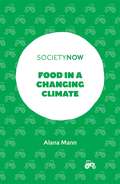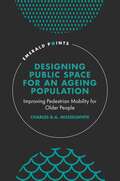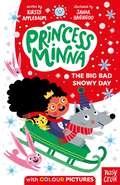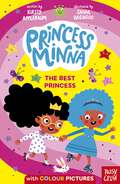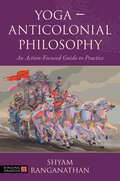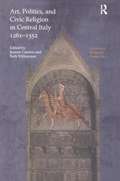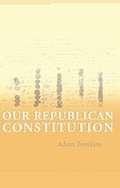- Table View
- List View
Energy Security in Times of Economic Transition: Lessons from China
by Yao LixiaAs China has shifted from a planned to a market-oriented economy, it has adjusted its energy policies accordingly. As a result, the Chinese energy industry has now gone through more than seventy years of transformation. Yet to date no single work has sought to assess the key factors driving these changes and their effects on China’s energy security, even though such questions have implications for assessments of the world’s energy security. Energy Security in Times of Economic Transition addresses this gap. Juxtaposing a domestic perspective with a wider, pan-energy-industry view, Yao Lixia explores trends in the evolution of China’s energy policy since its inception in 1949 and discusses the relations between policy changes and macroeconomic reforms. Then, by employing a new, ground-breaking quantitative framework for evaluating energy security, Yao crucially shows that macroeconomic reform did not improve China’s energy security over the first three decades of the reform period but in fact restricted China from developing more effective energy policies. This insight ultimately suggests lines of inquiry that can be extended to research in other countries, especially those in the midst of economic transition. For its detailed history of China’s energy policy and its novel, widely applicable methodology for evaluating energy security, this book is a must-read for researchers and postgraduate students in economics, security studies, political economy, and international political economy.
Beyond Confrontation: Globalists, Nationalists and Their Discontents
by Phil MullanReactions to the Coronavirus pandemic have escalated the pre-existing tensions between the US and China and among different Western nations. Confrontations between political globalists and mercantilist nationalists - between supporters of the rules-based international order and proponents of overt protectionism - are fueling ever-stronger international resentments. Coupling argumentative rigor with a pragmatic, plainspoken approach, Phil Mullan charts out a novel, democratic way past dangerous and self-defeating confrontations towards a future of open international collaboration based on popular participation within nation states. With its clear-eyed assessment of the opportunities and challenges of a more interconnected world - an assessment in which the economic internationalisation underpinning globalisation theories is neither romanticised nor vilified - Beyond Confrontation sets a judicious tone for the big geopolitical themes of our times.
Beyond Confrontation: Globalists, Nationalists and Their Discontents
by Phil MullanReactions to the Coronavirus pandemic have escalated the pre-existing tensions between the US and China and among different Western nations. Confrontations between political globalists and mercantilist nationalists - between supporters of the rules-based international order and proponents of overt protectionism - are fueling ever-stronger international resentments. Coupling argumentative rigor with a pragmatic, plainspoken approach, Phil Mullan charts out a novel, democratic way past dangerous and self-defeating confrontations towards a future of open international collaboration based on popular participation within nation states. With its clear-eyed assessment of the opportunities and challenges of a more interconnected world - an assessment in which the economic internationalisation underpinning globalisation theories is neither romanticised nor vilified - Beyond Confrontation sets a judicious tone for the big geopolitical themes of our times.
The Russian Urban Sustainability Puzzle: How Can Russian Cities be Green? (Emerald Points)
by Polina Ermolaeva Yulia Ermolaeva Olga Basheva Irina Kuznetsova Valerya KorunovaThis book provides a comprehensive analysis of the socio-environmental issues and sustainability challenges facing Russian cities. It encompasses a three-year project in Moscow and Kazan which includes population surveys, mass-media analysis, and interviews with different groups of stakeholders. The authors offer extensive analysis of the main components of sustainable cities such as air and water quality, sustainable transport and mobility, energy efficiency and energy consumption, waste management, green and blue zones, environmental governance and politics. The conclusion provides critical reflections on how understandings of Russia's sustainability challenges can be used to build more tailored and effective environmental governance for its cities.
The Russian Urban Sustainability Puzzle: How Can Russian Cities be Green? (Emerald Points)
by Polina Ermolaeva Yulia Ermolaeva Olga Basheva Irina Kuznetsova Valerya KorunovaThis book provides a comprehensive analysis of the socio-environmental issues and sustainability challenges facing Russian cities. It encompasses a three-year project in Moscow and Kazan which includes population surveys, mass-media analysis, and interviews with different groups of stakeholders. The authors offer extensive analysis of the main components of sustainable cities such as air and water quality, sustainable transport and mobility, energy efficiency and energy consumption, waste management, green and blue zones, environmental governance and politics. The conclusion provides critical reflections on how understandings of Russia's sustainability challenges can be used to build more tailored and effective environmental governance for its cities.
Electrifying Mobility: Realising a Sustainable Future for the Car (Transport and Sustainability #15)
by Graham Parkhurst William ClaytonTransport is responsible for a growing share of global energy consumption and greenhouse gas emissions, emerging as an economic sector for which technical solutions have shown limited benefits and a shift to electric mobility is seen as an essential part of tackling both problems. However, despite electric motive power being older technology than internal combustion engines and having many advantages, both inherent disadvantages and the inertia of not being the dominant road transport technology mean that it is only recently that electric vehicles (EVs) have attracted serious policy attention. Electrifying Mobility: Realising a Sustainable Future for the Car examines the basis of this electric mobility ‘turn’, considering the drivers, barriers to adoption and the current lived experience of EV use, drawing upon this experience to inform planning for mass EV adoption and how regulation might change to reflect the specific needs and challenges raised. Considering future transport policy, practice, and management where EVs become an important part of the road transport fleet, and, it is assumed, eventually come to dominate it, chapters study how EV and Connected and Autonomous Vehicle (CAV) technologies relate, and whether there are synergies with shared mobility. The Transport and Sustainability series addresses the important nexus between transport and sustainability containing volumes dealing with a wide range of issues relating to transport, its impact in economic, social, and environmental spheres, and its interaction with other policy sectors.
Electrifying Mobility: Realising a Sustainable Future for the Car (Transport and Sustainability #15)
by Graham Parkhurst, William ClaytonTransport is responsible for a growing share of global energy consumption and greenhouse gas emissions, emerging as an economic sector for which technical solutions have shown limited benefits and a shift to electric mobility is seen as an essential part of tackling both problems. However, despite electric motive power being older technology than internal combustion engines and having many advantages, both inherent disadvantages and the inertia of not being the dominant road transport technology mean that it is only recently that electric vehicles (EVs) have attracted serious policy attention. Electrifying Mobility: Realising a Sustainable Future for the Car examines the basis of this electric mobility ‘turn’, considering the drivers, barriers to adoption and the current lived experience of EV use, drawing upon this experience to inform planning for mass EV adoption and how regulation might change to reflect the specific needs and challenges raised. Considering future transport policy, practice, and management where EVs become an important part of the road transport fleet, and, it is assumed, eventually come to dominate it, chapters study how EV and Connected and Autonomous Vehicle (CAV) technologies relate, and whether there are synergies with shared mobility. The Transport and Sustainability series addresses the important nexus between transport and sustainability containing volumes dealing with a wide range of issues relating to transport, its impact in economic, social, and environmental spheres, and its interaction with other policy sectors.
Protest Technologies and Media Revolutions: The Longue Durée (Digital Activism And Society: Politics, Economy And Culture In Network Communication)
by Athina Karatzogianni Michael Schandorf Ioanna FerraContains an Open Access chapter. Protest Technologies and Media Revolutions portrays the critical role of mass connection in the success of any movement, resurrection, protest, and revolution. The communication mechanisms for this connection have, at times, evolved and elsewhere undergone revolutions of their own. Authors debate this relationship, and the strategies and lessons of 'connecting to the masses' considering the development of media, technology and communication strategies over the last century. Key topics covered include revolution, communication, protest and technology, spanning from the Russian Revolution to the present day. The discussion is not limited to historic cases of technology and revolution, nor to contemporary ones. The book, therefore, generates a debate about how art, media and communication technologies have been operationalized to connect, mobilize and organize, in different historical times, and in diverse national, political, and socio-economic contexts.
Protest Technologies and Media Revolutions: The Longue Durée (Digital Activism And Society: Politics, Economy And Culture In Network Communication)
by Athina Karatzogianni,Michael Schandorf and Ioanna FerraContains an Open Access chapter. Protest Technologies and Media Revolutions portrays the critical role of mass connection in the success of any movement, resurrection, protest, and revolution. The communication mechanisms for this connection have, at times, evolved and elsewhere undergone revolutions of their own. Authors debate this relationship, and the strategies and lessons of 'connecting to the masses' considering the development of media, technology and communication strategies over the last century. Key topics covered include revolution, communication, protest and technology, spanning from the Russian Revolution to the present day. The discussion is not limited to historic cases of technology and revolution, nor to contemporary ones. The book, therefore, generates a debate about how art, media and communication technologies have been operationalized to connect, mobilize and organize, in different historical times, and in diverse national, political, and socio-economic contexts.
The Emerald Handbook of Public Administration in Latin America
by B. Guy Peters Carlos Alba Tercedor Conrado RamosWhile most scholarship on public administration in Latin America has taken an overtly legal approach, this handbook examines the subject from a political and public management perspective. In so doing, this handbook brings the study of public administration in Latin America more in line with studies conducted in other parts of the world, providing a basis for much more fruitful comparison. The handbook is divided into two parts. The first section contains chapters that explore a range of administrative systems in existence across Latin America, including the major representative types of public administration. The second portion of the book presents comparative examinations of important issues relating to public administration across the region, including accountability, public personnel management, policy coordination and the politics of bureaucracy. In providing an in-depth examination of public administration in contemporary Latin America, this handbook is a vital resource for scholars interested in the fields of public administration in both a Latin American and comparative context, as well as practitioners in government.
The Emerald Handbook of Public Administration in Latin America
by B. Guy PetersWhile most scholarship on public administration in Latin America has taken an overtly legal approach, this handbook examines the subject from a political and public management perspective. In so doing, this handbook brings the study of public administration in Latin America more in line with studies conducted in other parts of the world, providing a basis for much more fruitful comparison. The handbook is divided into two parts. The first section contains chapters that explore a range of administrative systems in existence across Latin America, including the major representative types of public administration. The second portion of the book presents comparative examinations of important issues relating to public administration across the region, including accountability, public personnel management, policy coordination and the politics of bureaucracy. In providing an in-depth examination of public administration in contemporary Latin America, this handbook is a vital resource for scholars interested in the fields of public administration in both a Latin American and comparative context, as well as practitioners in government.
Food in a Changing Climate (SocietyNow)
by Alana MannOur diets are going to change dramatically as global warming affects growing seasons and the availability of different foods around the world. Meanwhile, our foodways are among the biggest contributors to greenhouse gas emissions. To address these challenges Food in a Changing Climate demands we look beyond our plates to the roots of inequity in our food systems. It presents an unashamedly political agenda for 'deep adaptation', focused on the rejuvenation and strengthening of local and regional food systems that have been steadily eroded in the name of economic efficiency. The colonial origins of fossil-fuel based food production and trade persist in the marginalisation of farmers, food workers, and fishers in a corporatized food system that promotes the exploitation of the environment, excess production, and hyper-consumerism. These factors contribute to climate change, poverty, and health inequities on a global scale. Drawing on case studies from around the world, this book illustrates how the commodification of food has made us particularly vulnerable to climate change, extreme weather events, and pandemics such as COVID19. These shocks reveal the danger of our reliance on increasingly complex supply chains - dominated by a decreasing number of mega-companies - for our food security. The unsustainability of the way we produce and eat food is clear. It has been for a long time. Food in a Changing Climate explores how we can cultivate resilient communities through the just application of new technologies, the recovery of traditional knowledges, and by building diversity to protect the livelihoods of food producers everywhere.
Food in a Changing Climate (SocietyNow)
by Alana MannOur diets are going to change dramatically as global warming affects growing seasons and the availability of different foods around the world. Meanwhile, our foodways are among the biggest contributors to greenhouse gas emissions. To address these challenges Food in a Changing Climate demands we look beyond our plates to the roots of inequity in our food systems. It presents an unashamedly political agenda for 'deep adaptation', focused on the rejuvenation and strengthening of local and regional food systems that have been steadily eroded in the name of economic efficiency. The colonial origins of fossil-fuel based food production and trade persist in the marginalisation of farmers, food workers, and fishers in a corporatized food system that promotes the exploitation of the environment, excess production, and hyper-consumerism. These factors contribute to climate change, poverty, and health inequities on a global scale. Drawing on case studies from around the world, this book illustrates how the commodification of food has made us particularly vulnerable to climate change, extreme weather events, and pandemics such as COVID19. These shocks reveal the danger of our reliance on increasingly complex supply chains - dominated by a decreasing number of mega-companies - for our food security. The unsustainability of the way we produce and eat food is clear. It has been for a long time. Food in a Changing Climate explores how we can cultivate resilient communities through the just application of new technologies, the recovery of traditional knowledges, and by building diversity to protect the livelihoods of food producers everywhere.
Designing Public Space for an Ageing Population: Improving Pedestrian Mobility for Older People (Emerald Points)
by Charles B. A. MusselwhiteDesigning Public Space for an Ageing Population examines the barriers older people face by being a pedestrian in the built environment and demonstrates how to overcome them. Drawing on research carried out across the globe, and framed around Bourdieu's theory of capitals, this book establishes how to overcome restrictions and barriers to mobility including: - Infrastructure capital, such as technology, services, roads, pavements, finance and economics - Social capital, for example friends, family, neighbourhood and community - Cultural capital (norms, expectations, rules, laws) - Individual capital (skills, abilities, resilience, adaptation and desire and willingness to change) The book demonstrates that the public realm must be safe and accessible, but also attractive and desirable to an ageing population. The book includes case studies presenting solutions around CABE's objectives of urban design, notably: safe and accessible space including ease of movement; legible space, including adaptability, diversity and choice and; distinctive and aesthetically pleasing space, including character, continuity and quality.
Designing Public Space for an Ageing Population: Improving Pedestrian Mobility for Older People (Emerald Points)
by Charles B. A. MusselwhiteDesigning Public Space for an Ageing Population examines the barriers older people face by being a pedestrian in the built environment and demonstrates how to overcome them. Drawing on research carried out across the globe, and framed around Bourdieu's theory of capitals, this book establishes how to overcome restrictions and barriers to mobility including: - Infrastructure capital, such as technology, services, roads, pavements, finance and economics - Social capital, for example friends, family, neighbourhood and community - Cultural capital (norms, expectations, rules, laws) - Individual capital (skills, abilities, resilience, adaptation and desire and willingness to change) The book demonstrates that the public realm must be safe and accessible, but also attractive and desirable to an ageing population. The book includes case studies presenting solutions around CABE's objectives of urban design, notably: safe and accessible space including ease of movement; legible space, including adaptability, diversity and choice and; distinctive and aesthetically pleasing space, including character, continuity and quality.
Princess Minna: The Big Bad Snowy Day (Princess Minna #3)
by Kirsty ApplebaumPrincess Minna loves to sort out mix-ups and mishaps in the kingdom! In this full-colour, illustrated chapter book, join her on a funny, exciting adventure to help Granny and her friends, and still have time for a snowball fight! Princess Minna lives in Castle Tall-Towers with the King and Queen, Raymond the Wizard and her best dragon friend, Lorenzo. There are often mix-ups and mishaps in the kingdom and Princess Minna loves to sort them out! She can tame unicorns, kiss frogs and fight dragons (apart from Lorenzo) and she is very good at fixing things before it's time for bed. In The Big Bad Snowy Day, snow has fallen overnight and poor Granny Hoody is snowed in! Princess Minna has to fix things. But Granny Hoody lives in the dark forest and there's a big bad wolf who lives there too. Can Princess Minna find Granny's cottage or will she stray from the path and meet the WOLF instead? Full of colourful illustrations, these short, funny stories are perfect for readers just moving on from picture books and visual readers.
Princess Minna: The Giant Beanstalk (Princess Minna)
by Kirsty ApplebaumPrincess Minna loves to sort out mix-ups and mishaps in the kingdom! In this full-colour illustrated chapter book, join her on her hilarious adventure up the beanstalk! Princess Minna lives in Castle Tall-Towers with the King and Queen, Raymond the Wizard and her best dragon friend, Lorenzo. There are often mix-ups and mishaps in the kingdom and Princess Minna loves to sort them out! She can tame unicorns, kiss frogs and fight dragons (apart from Lorenzo) and she is very good at fixing things before it's time for bed. A giant beanstalk has grown up in the kingdom and the giant who lives at the top of it keeps stealing things from the townsfolk! Is Minna brave enough to climb the beanstalk and bring back the stolen things, and will the giant EAT HER if she does? Full of colourful illustrations, these short, funny stories are perfect for readers just moving on from picture books and visual readers.
Princess Minna: The Best Princess (Princess Minna #4)
by Kirsty ApplebaumPrincess Minna loves to sort out mix-ups and mishaps in the kingdom! In this full-colour, illustrated chapter book, join her on her hilarious quest to be the best princess OF ALL! Princess Minna lives in Castle Tall-Towers with the King and Queen, Raymond the Wizard and her best dragon friend, Lorenzo. There are often mix-ups and mishaps in the kingdom and Princess Minna loves to sort them out! She can tame unicorns, kiss frogs and fight dragons (apart from Lorenzo) and she is very good at fixing things before it's time for bed. In The Best Princess, Princess Minna's mirror ALWAYS tells her that she's the best princess of all, so she's SHOCKED when one day it says that PRINCESS SKY-BLUE is the best! Princess Minna sets out to put things right again but learns instead that being a BEST FRIEND is far better! Full of colourful illustrations, these short, funny stories are perfect for readers just moving on from picture books and visual readers.
Forging Queer Leaders: How the LGBTQIA+ Community Creates Impact from Adversity
by Bree Fram Elizabeth CavallaroAn inspirational guide to LGBTQ+ leadership, with a history of queer leadership, an exploration of how adversity can develop management superpowers and inspirational stories from queer leaders in diverse careers.
Yoga – Anticolonial Philosophy: An Action-Focused Guide to Practice
by Shyam RanganathanA decolonial guide to yoga from an expert in Indian moral philosophy and Yoga, with exploration and advice on unlearning colonialism, learning the activism of Yoga from various sources such as the Yoga Sūtra and Bhagavad gītā, and how to bring authenticity into your daily practice.
Art, Politics And Religion In Central Italy, 1261-1352 (Courtauld Research Papers #1)
by Joanna Cannon Beth WilliamsonThis was first published in 2000: Introduced by Joanna Cannon, this volume of essays by postgraduate students at the Courtauld Institute, University of London, explores some of the ways in which art was used to express, to celebrate, and to promote the political and religious aims and aspirations of those in power in the city states of central Italy in the thirteenth and fourteenth centuries. The contributions focus on four centres: Siena, Arezzo, Pisa and Orvieto, and range over a number of media: fresco, panel painting, sculpture, metalwork, and translucent enamel. Employing a variety of methods and approaches, these stimulating essays offer a fresh look at some of the key artistic projects of the period. The dates cited in the title, 1261 and 1352, refer to two well-known works, Coppo di Marcovaldo’s Madonna del Bordone and the Guidoriccio Fresco in the Palazzo Pubblico of Siena, here newly assigned to this date. By concentrating on individual cases such as these, the essays provide rewardingly sustained consideration, at the same time raising crucial issues concerning the role of art in the public life of the period. These generously-illustrated studies introduce new material and advance new arguments, and are all based on original research. Clear and lively presentation ensures that they are also accessible to students and scholars from other disciplines. Art, Politics and Civic Religion in Central Italy, 1261-1352 is the first volume in the new series Courtauld Institute Research Papers. The series makes available original recently researched material on western art history from classical antiquity to the present day.
The Crown in Vogue: Vogue's 'special royal salute' to Queen Elizabeth II and the House of Windsor
by Robin Muir Josephine RossA lavishly illustrated celebration of the 70-year reign of Queen Elizabeth II and the British Royal Family from the unrivalled archive of British Vogue.'Vogue, like the royal family, has been through many evolutions of its own, and to view Her Majesty's life though the record of our pages is truly a document of history.' - Edward Enninful, Editor-in-Chief of British VogueFour monarchs (crowned and uncrowned); one abdication; one royal investiture; a jewel box of jubilees and many, many royal marriages... British Vogue has borne witness to a century of royal history. The Crown in Vogue is the magazine's 'special royal salute' to our longest serving monarch and her 'assured and unwavering' presence in the lives of a nation.Vogue's first star photographer, Cecil Beaton, was entranced by the House of Windsor and the admiration was mutual. A younger star photographer, Antony Armstrong Jones, left Vogue to marry the Queen's sister and returned as Lord Snowdon. The Queen's cousin, Vogue's Lord Lichfield proved an insightful photographer of royal style along with many of Vogue's fashion photographers including Horst, Norman Parkinson and David Bailey. With visual treasures from Vogue's unrivalled archive and contributions through the decades from the most perceptive of royal commentators - from Evelyn Waugh to Zadie Smith - The Crown in Vogue is the definitive, authoritative portrait of Queen Elizabeth II's magnificent reign - and of royalty in the modern age.
Making Rights Real: The Human Rights Act In Its First Decade (PDF)
by Ian Leigh Roger MastermanTen years after the passing of the Human Rights Act 1998, it is timely to evaluate the Act's effectiveness. The focus of Making Rights Real is on the extent to which the Act has delivered on the promise to 'bring rights home'. To that end the book considers how the judiciary, parliament and the executive have performed in the new roles that the Human Rights Act requires them to play and the courts' application of the Act in different legal spheres. This account cuts through the rhetoric and controversy surrounding the Act, generated by its champions and detractors alike, to reach a measured assessment. The true impact in public law, civil law, criminal law and on anti-terrorism legislation are each considered. Finally, the book discusses whether we are now nearer to a new constitutional settlement and to the promised new 'rights culture'.
The Evolution Of A Constitution: Eight Key Moments In British Constitutional History (PDF)
by Elizabeth WicksThis new work casts light upon the British constitution of today by means of an in-depth consideration of eight key moments in British constitutional history. The historical perspective adopted in this book facilitates an informed and contextual understanding of the intricacies of the contemporary British constitution. Indeed the book is based upon the premise that it is impossible to fully comprehend the nature, content and implications of today's constitution without a firm grasp on how it evolved into its present form. Each of the eight main chapters focuses upon a different event in constitutional history which has contributed certain principles or practices to the modern day constitution, and explains how these principles or practices evolved and highlights their modern day significance. Historical events covered include the 1688 Glorious Revolution, the 1707 Union between England and Scotland, the 1911 Parliament Act and the 1972 European Communities Act.
Our Republican Constitution
by Adam TomkinsThis new book by Adam Tomkins sets out a radical vision of the British constitution. It argues that despite its outwardly monarchic form the constitution is profoundly informed, and indeed shaped, by values and practices of republicanism. The republican reading of the constitution presented in this book places political accountability at the core of the constitutional order. As such, Our Republican Constitution offers a powerful rejoinder to the current trend in legal scholarship that sees the common law and the courts, rather than Parliament, as the central players in holding government to account. The book further contends that while the constitution should be understood as having republican foundations, current constitutional practice is, in a number of respects, insufficiently republican in character. The book closes by outlining a programme of republican constitutional reform that is designed to secure genuinely responsible government. This is an original and provocative reinterpretation of the central themes of the British constitution, drawing on constitutional history (especially of the seventeenth century), political theory and public law.








